The first steps I took to make a dungeon generator were asking my self what to put in the wandering monsters table and what kind of rooms a catacomb like dungeon may contain.
WHAT IS DUNGEON CRAWL?
A dungeon crawl is a type of scenario in fantasyrole-playing games in which heroes navigate a labyrinth environment, (a dungeon or a maze), battling various monsters, avoiding traps, solving puzzles, and looting any treasure they may find.
If you want to have a better idea have a look at the preview of the Dungeon Crawl Generator – Catacomb.
HOWEVER if you were looking for an online Dungeon Generator my pick is the website Donjon. This websiste generate good dungeons for your game sessions.
BUT if you are here because you want to know more about the concept of dungeon crawl – or dungeon crawling – you may want to read my article about Advanced Heroquest, which is one of the best systems you can find when talking about dungeon crawling. In the same article you will find a link for a free pdf with the rules and awesome dungeon generator. Believe me when I tell you that it is a game that deserves your attention.
About the Wandering Monsters
I pulled out from my shelves all the monstrous compendiums of AD&D, D&D 3.5, Pathfinder and D&D 5th, and started to flip the pages to read every monster.
The job here was methodical, but I took the chance to have a look at many old creatures that I forgot about.
I was looking for categories of plausible monsters that can fit into a catacomb.
AD&D details a lot of monsters, some of them have never been converted, especially those from the Mystara Campaign Setting and its specific compendium of creatures.
Pathfinder and D&D 3.5 also have a lot of interesting creatures. Both system also share the same principles.
D&D 5th does not have many creatures, for obvious reasons…they have published one monster manual.
However, we want this supplement to be a D20 system compatible.
With this in mind, I assumed that it was better to list a good choice of wandering monsters, then each Game Master will decide what to employ and what not.
It took a while to make a decent list, most of the monsters came from the bestiaries of pathfinder and AD&D.
For a Game Master of average experience, this should not represent a big obstacle.
Finally, I finished my list of wandering monsters.
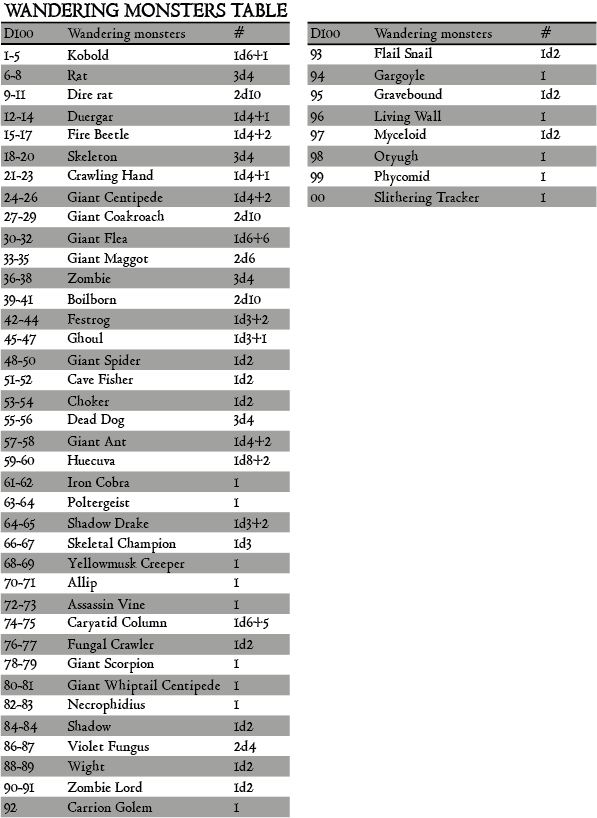
You can clearly see that the list includes undead, vermin and some monsters of different categories.
I thought that Gargoyles could represent a plausible pick. The fact they look like statues that occupy a big mausoleum sounds good.
Also Caryatid Column looks fine. A sort of low level construct that is not that strong.
The evergreen Otyugh. We want him in the team of course!
The disgusting Living Wall! This monster is old, I know of him since AD&D.
Kobolds! Just in case the characters encounter them and want to warm up.
About the Rooms
Next step, defining specific rooms that can be found in a catacomb. I made a quick investigation and I came out with the following terms: coffins, graveyard, alcoves, crypt, sarcophagus, mausoleum.
I included generic rooms also, like small, medium and large rooms.
Every specific room have an entry with a short description and a sequence of random events that may occur.
Every generic room may contains what I called hazards and features.
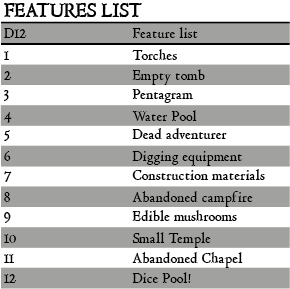

D12 for Random Rolls
Here was the critical part. What dice to employ to generate random numbers.
I opted for the D12 because it offers a good range of distribution. Higher than the D10 and yet not so high like the D20 or the D100.
In some cases I employed 2D12, especially to generate corridors, roll the number of doors and determine the type of room.
For example, the generator ask you roll 2D12 to determine the width of a corridor. The same, 2D12 to determine how many sections a corridor is composed of; how the corridor ends and what kind of traits the corridor has.

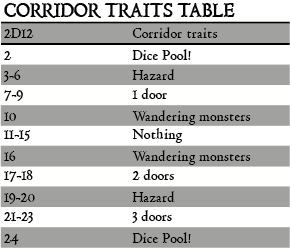
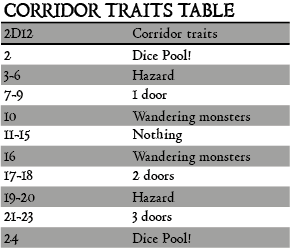
The same principle works for rooms of course; you basically roll dungeon “on cascade”. You need other 4 tables to roll the rooms, their category, the number of doors, etcetera.
DICE POOL
Many of you have probably heard of the Dice Pool. Some Game Masters employ this tool in many ways.
The Dice Pool in this dungeon generator is just something in the hand of the Game Master to spice up a bit the exploration.
From time to time, the Game Master earns what is called a Dice Pool, which is nothing else than a D6. He can stockpile more than a D6 of course.
Then, in any moment, he can decide to roll a certain amount of dices and, for every 1s scored, he earns a point to spend on the Dice Pool table.
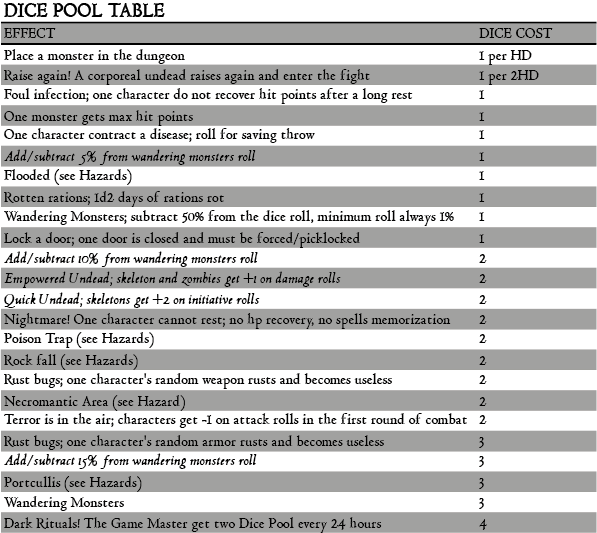
Now, both the wandering monsters table and the dice pool table can be modified and improved to fit the personal tastes.
The same can be said for the table to generate the dungeon. By modifying the statistical distribution of the 2D12 rolled, you get a different outcome.
So, these were the basic ideas.
